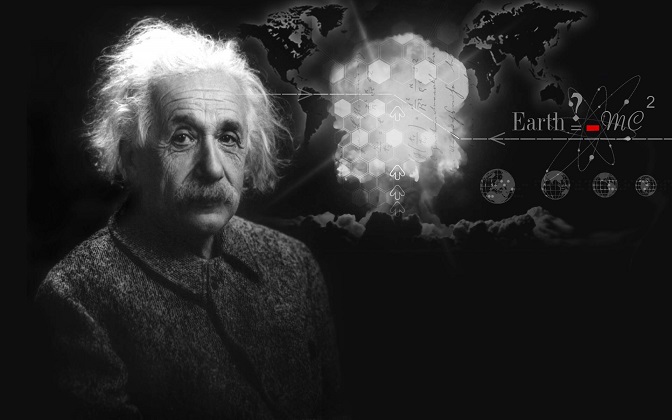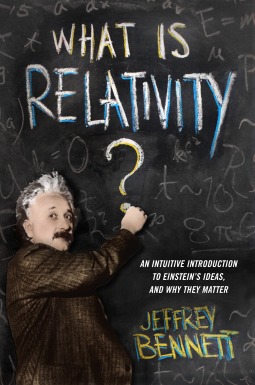Review: What Is Relativity?

“It’s not your fault; rather, it is a result of the fact that we don’t commonly experience the extreme conditions under which the true nature of time and space is most clearly revealed.”
Jeffrey Bennett’s handy resource is probably the best primer on Einsteinian relativity on the market today. Far more lucid than your average physics textbook, Bennett runs through a slew of accessible thought experiments that are easy to commit to memory. While quick to emphasize that each of the ideas discussed has sound mathematical basis, there is almost no math in the book. Its focus is on the conceptual — how relativity works, how it is applied, and what Einstein’s ideas can tell us about the nature of scientific inquiry.
It is often said that the concepts of relativity upend our common sense in ways that make them difficult to grasp. But as Bennett points out, this might not be the best way to think about it. Our local experience of spacetime does not include traveling at speeds approaching the speed of light, orbiting in the vicinity of black holes, or compressing objects to infinite densities. How can we have “common” sense about things we don’t commonly experience, Bennett asks? Instead, Einstein’s ideas ask that we revise our everyday intuitions about spacetime in the same way that learning the Earth isn’t flat occasioned us to revisit our intuitions about the meaning of ‘up’ and ‘down’.
Bennett shows readers how, armed with just two foundational principles — that physical laws (or patterns) are the same for everyone (what Hume called the “Principle of Uniformity of Nature”) and that the speed of light is a universal constant — Einstein forever changed our understanding of the universe. Those principles ultimately fused the concepts of space and time such that we can no longer speak of certain phenomena in Newtonian terms, of spooky “action at a distance” between objects orbiting other objects. Einstein resolved this dilemma in 1916 by giving us a new view of gravity, otherwise known as the general theory of relativity. As Bennett writes:
“Gravity arises from the curvature of spacetime, and the curvature of spacetime is shaped by the masses within it. The greater the mass, the more it curves spacetime around it. A small object orbiting a more massive object simply follows the straightest possible path that it can given the local structure of spacetime.” (p. 112)
There is nothing here that should make your head hurt, excepting perhaps any futile attempts to grapple with the interminable distance between the stars and what that means for our getting there. Early in the book he lays bare this reality while pondering the preposterous speeds at which light travels in a vacuum:
“The fastest spacecraft we’ve ever built are traveling out into space at speeds of around 50,000 kilometers per hour, which is the same as about 14 kilometers per second. This is quite fast by human standards; in fact, it is about 100 times as fast as a “speeding bullet.” However, it is less than 1/20,000 of the speed of light, which means that at this speed, it would take more than 20,000 years to go the distance that light travels in a single year.” (pp. 9-10)
Consider that Andromeda is our closest neighboring galaxy. It is 2.5 million light-years from Earth. Yeah. The math on that is not pretty for aspiring spacefarers.
Throughout the book Bennett patiently debunks the ‘just a theory’ rhetoric often applied to not just Einstein’s ideas but to various other cornerstones of the sciences. More than anything else, what sets science apart is its evidence-based approach to explaining the natural order of the universe. The corroboration of theories by way of experimentally verifiable predictions affords us deeper insight into the workings of physical reality.
Far more than a ‘theory’ in any colloquial sense, the relativistic effects described by Einstein’s equations have been multiply attested using everything from particle accelerators and nuclear power to mobile phones and GPS navigation and other common-use technologies. What began as fanciful speculation in the young Einstein’s brain became the empirical bedrock of modern physics through repeated testing and validation. We cannot truly understand the universe without first understanding relativity, and we cannot truly understand the essence of science until we understand its commitment to evidence.
Postscript: Double kudos to Bennett for using the proper terminology: ‘general theory of relativity’, as opposed to the ‘theory of general relativity’, the latter of which is not only a semantic contradiction but commonly found in popular press and even in some introductory texts.
Note: This review is mirrored over at Goodreads and at Amazon.



Comments